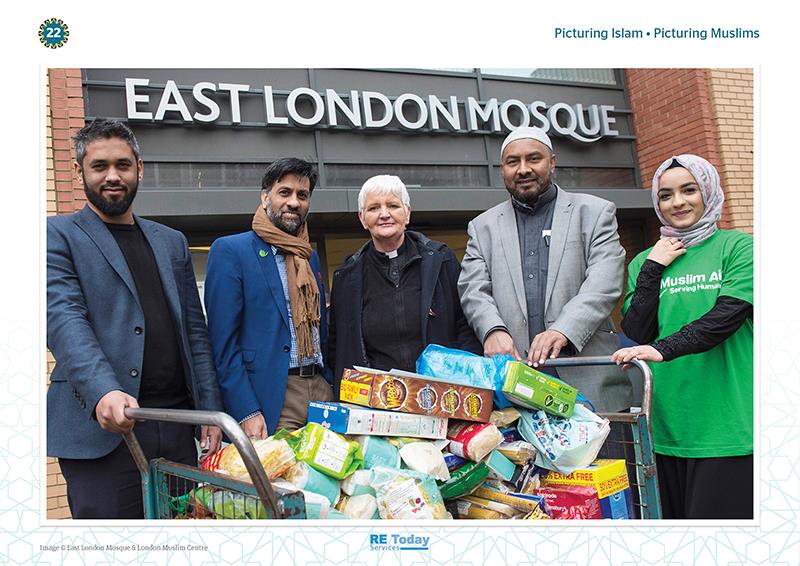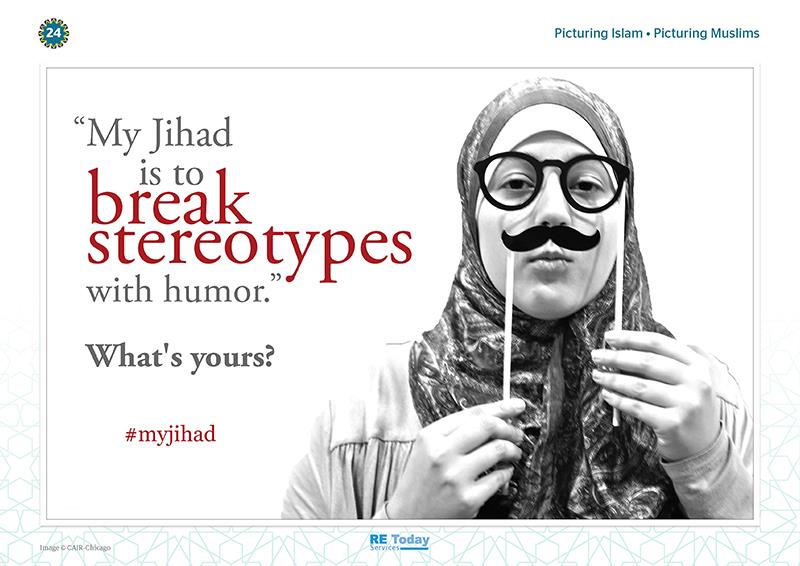I have been developing new resources for teaching Islam over the last year. As part of this work, our factual quiz with 11-year-olds about Muslims in Britain uncovered some misconceptions.
What proportion of British people are Muslim? The average guess from one group of pupils was 25 per cent. But what is the correct answer? In the last census, it was 4.8 per cent.
Now I love living in a society where one in 20 people are Muslims, but if a young person feels threatened by Islam, exaggerating the figures five-fold, as those guesses did, could invite prejudice or something more dangerous.
RE teachers fight prejudice with knowledge. We know pupils need a richer and more textured knowledge of Islam. After taking our quiz, one 11-year-old from Brighton wrote: “I was really shocked that there was a mosque during 1889. This is because I didn’t realise there was enough Muslims to need one – during Victorian era it is stereotyped that Britain was full of Christians. I did badly in the questionnaire because I often hear negative media opinions of Muslims. Some say our country is over-run by Muslims, when in actual fact they are only 4.8 per cent of Britain’s population.”
I like it when the pupils have grasped the lessons that the teachers need to learn. In creating our new resources – entitled Picturing Islam, Picturing Muslims – we wanted a strong focus on both lived Islam in Britain today, and on RE’s intentions to promote dialogical learning and critical engagement with attitudes of respect.
We asked the photography club at a school in Cardiff to provide some of our visual stimulus. In the image here, five young 16 to 18 Muslims wore t-shirts, chosen to express imaan – faith – and including the slogans “Muslims believe in Jesus’ and “Muhammad was a feminist”.
These simple expressions of faith by young British Muslims instantly challenge the learner with fresh images of Islam, raising big questions. They have been very successful in opening up “dangerous conversations” about Muslims and Islam in classroom RE.
Professor Ted Cantle – who established the Institute of Community Cohesion in 2005 and is recognised as a leading authority on community cohesion and intercultural relations – uses this helpful concept to crystallise the need for pupils to be given safe space to talk through the negative ideas they may have about Islam, or any group who are negatively stereotyped. In such dangerous conversation, skilled discussion leaders can confront and challenge Islamophobia.
Don’t satanise. Don’t sanitise
We find it important in this work to share clearly with young people that the purpose of RE is neither to “satanise” nor to “sanitise” religions. We do not make out that any religion is devilish, nor will we hide the fact that all religions have a dark side. They are sometimes used to justify hideous evil.
Instead, we teach pupils to be reasonable about religion, and to disagree respectfully.
Quality resources also need to reflect the internal diversity of the faith, balancing local and global examples of Islam. Learners deserve to see the spirituality of Islam in focus as much as the social dimensions of how it feels to young Muslims to see themselves as a part of the Ummah, a single world community.

Authentic: Giving to charity and those less fortunate is a duty and a Pillar of Islam – these people are collecting food for the community around the East London. This image is from Picturing Islam, Picturing Muslims
Selecting about 50 images to represent Islam in authentic and balanced ways has been a challenge, but we wanted to reflect the fact that Islam is the second largest religion in the UK and globally: there are about 1.8 billion Muslims, about 24 per cent of the world population, worldwide. We chose to picture well known British Muslims from cinema, sport or the Great British Bake Off.
An ambitious RE curriculum recognises that young people are entitled to a rich knowledge of the Muslim faith, ranging across its history, beliefs, contributions to science, culture and society and the lived experience of Muslims in our communities.
Learners also need the interpretive tools to make sense of the religion. Take the example of Islamic architecture: from the 1889 Woking Mosque we have now more than 1,800 mosques in towns and cities all over the UK (for comparison, there are about 50,000 Christian congregations). Most of these mosques are converted houses or warehouses, but some are purpose-built. Good RE equips learners with understanding of the growth of British Islam.
We have used visual learning to surprise pupils, and to confront the realities of Islamophobia. The UK’s stereotypical and negative representation of Islam has led to rising anti-Islamic hate crime and prejudice.
As teachers tackle questions about racism, tribalism and intolerance examples of “Islamist terrorism” need to be addressed. Where media reports focus on a tiny number of Muslims involved in fanaticism, RE teaching takes a broader view of the whole community.
The concept of jihad, struggle, is hard to teach. Muslims identify the “greater jihad” as the struggle to live a good life and make one’s own contribution of goodness to society.

What is Jihad? Sadaf Syed is a comedic photographer from America who features in the new resource Picturing Islam, Picturing Muslims
News media speak only of “jihadists” involved with bomb-making. The image from the comedic photo artist Sadaf Syed is a great one to use to explore this key concept, often misunderstood.
RE goes beyond knowledge and presents challenges to prejudiced negative views about any religion or worldview. This is a subtle example of how to begin the process of undermining stereotypes.
Now is a good time for RE to step up its ambitions in representing Islam and enabling all our young people to think fairly for themselves about the Muslim visions of what it means to be human.
- Lat Blaylock is an RE Today advisor and editor of REtoday magazine.
Further information & resources
- Interfaith Week runs from November 8 to 15. For details, visit www.interfaithweek.org
- Picturing Islam, Picturing Muslims by Stephen Pett and Lat Blaylock (2020), is available priced at £45 from www.retoday.org.uk/pipm. A promotional video can be found here: https://youtu.be/D7WgPCdM0nk
